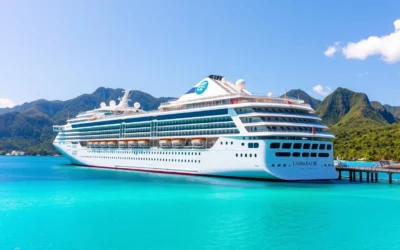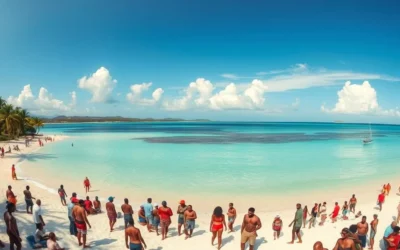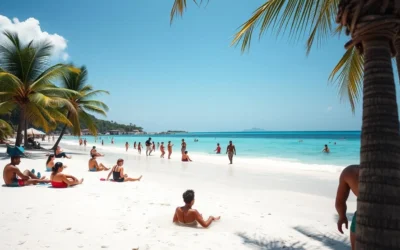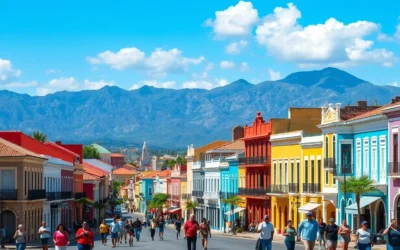Did you know that Port-au-Prince is home to the largest collection of Haitian art in the world, with over 15,000 pieces showcasing the country’s rich cultural heritage? This vibrant capital city, nestled between mountains and sea, offers travelers a unique blend of history, art, and authentic Caribbean experiences that can’t be found anywhere else in the region.
Getting There & Planning Your Journey
Port-au-Prince is served by Toussaint Louverture International Airport (PAP), located about 10 km (6.2 miles) from the city center. Several major airlines offer direct flights from Miami (2 hours), Fort Lauderdale, New York, and other major cities in the United States and Caribbean.
When planning your trip, ensure your passport is valid for at least six months beyond your planned departure date. While a tourist visa isn’t required for stays under 90 days for many nationalities, it’s always best to check the latest entry requirements before traveling.
Ready to Experience Port-au-Prince?
Find the best flight deals to start your Haitian adventure!
Best Time to Visit Port-au-Prince
The ideal time to visit Port-au-Prince is during the dry season from December to April when temperatures hover around a pleasant 25-30°C (77-86°F) with minimal rainfall. This period offers the most comfortable conditions for exploring the city’s outdoor attractions and cultural sites.
The rainy season runs from May to November, with June to November being hurricane season. During these months, you can expect brief but intense afternoon showers, higher humidity, and the occasional tropical storm. While prices may be lower during this period, some outdoor activities might be limited.
| Season | Months | Weather | Recommendation |
| Peak Season | December-February | Dry, 25-28°C (77-82°F) | Highly Recommended |
| Shoulder Season | March-April | Mostly dry, 27-30°C (80-86°F) | Recommended |
| Low Season | May-November | Rainy, 28-32°C (82-90°F) | Not Recommended |
If you’re interested in experiencing Haitian cultural events, consider visiting during Carnival (usually in February), when the streets come alive with colorful parades, music, and dancing. The Artisan Fair in December is another highlight, showcasing the best of local crafts and art.
Getting Around Locally
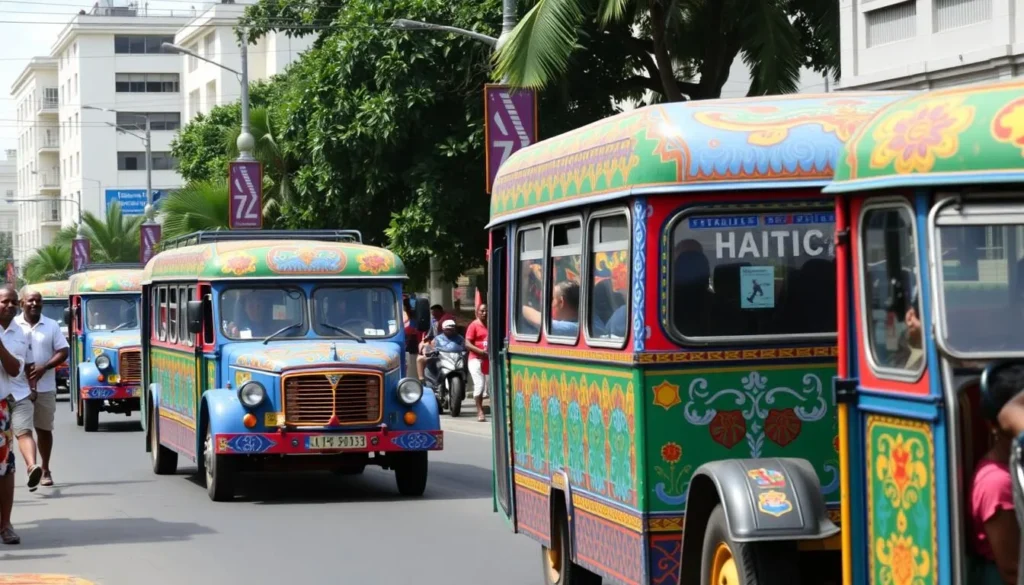
Port-au-Prince offers several transportation options for navigating the city:
Tap-Taps
These colorful, modified pickup trucks or buses are Haiti’s most iconic form of public transportation. They run along set routes throughout the city and cost around 10-50 Gourdes (approximately $0.10-0.50 USD) per ride. While inexpensive and authentic, they can be crowded and challenging for first-time visitors to navigate.
Taxis
Taxis are readily available in Port-au-Prince, especially around hotels, tourist areas, and the airport. Always negotiate the fare before getting in, as most don’t use meters. A typical ride within the city costs between 500-1,000 Gourdes ($5-10 USD). For safety and convenience, ask your hotel to recommend reliable taxi services.
Car Rentals
Renting a car gives you the freedom to explore at your own pace, but be prepared for challenging driving conditions. Traffic can be chaotic, and road signs are limited. Several international and local rental agencies operate at the airport and in Pétionville.
Guided Tours
For first-time visitors, guided tours offer the most comfortable and informative way to see the city’s highlights. Many hotels can arrange private drivers or tour guides who provide valuable cultural context while navigating the city efficiently.
Explore Port-au-Prince Your Way
Rent a car to discover Haiti at your own pace
Where to Stay
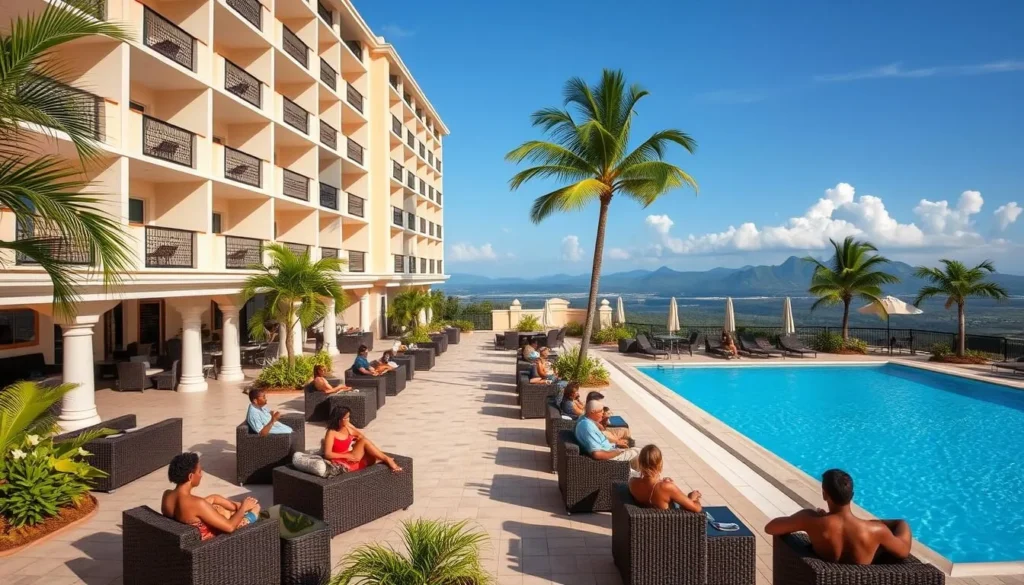
Port-au-Prince offers a range of accommodation options to suit different budgets and preferences. Most visitors choose to stay in Pétionville, an upscale suburb in the hills east of downtown that offers better security, dining options, and amenities.
Luxury Hotels
For those seeking upscale accommodations, the Marriott Port-au-Prince, Royal Oasis, and Karibe Hotel offer modern amenities, swimming pools, reliable Wi-Fi, and excellent restaurants. Expect to pay $150-250 USD per night.
Mid-Range Options
Hotels like Le Plaza, NH Haiti El Rancho, and The Inn at Villa Bambou provide comfortable rooms, good service, and convenient locations at more moderate prices, typically $80-150 USD per night.
Budget Accommodations
Budget-conscious travelers can find guesthouses and smaller hotels for $40-80 USD per night. While amenities may be more basic, many offer authentic Haitian hospitality and home-cooked meals.
When booking accommodation, consider factors like proximity to attractions, security measures, backup power generators (as power outages can occur), and airport transfer options. Most reputable hotels offer airport pickup services, which can be particularly helpful for first-time visitors.
Find Your Perfect Stay in Port-au-Prince
Browse top-rated hotels and guesthouses with secure booking
Dining & Local Cuisine
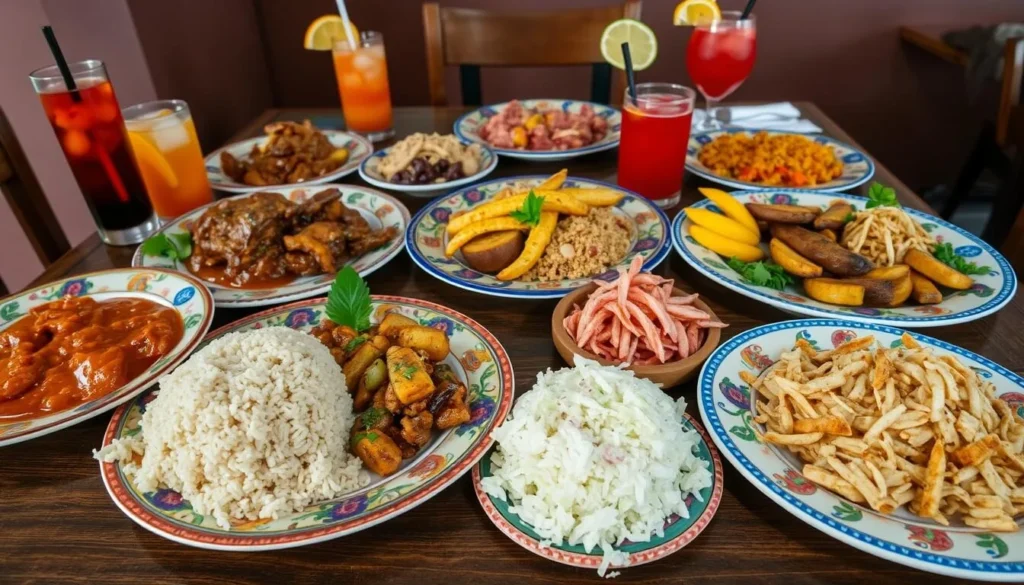
Haitian cuisine is a delicious fusion of African, French, and Caribbean influences, featuring bold flavors, aromatic spices, and fresh local ingredients. Port-au-Prince offers everything from street food to fine dining experiences.
Must-Try Haitian Dishes
- Griot – Cubes of pork marinated in citrus and spices, then fried to perfection. Typically served with pikliz (spicy coleslaw) and fried plantains.
- Diri ak Djon Djon – Rice cooked with black mushrooms, giving it a distinctive earthy flavor and dark color.
- Lambi – Conch meat prepared in a spicy sauce, a delicious seafood delicacy.
- Soup Joumou – A hearty pumpkin soup traditionally eaten on New Year’s Day to celebrate Haiti’s independence.
- Akra – Crispy malanga fritters, perfect as a snack or appetizer.
- Rhum Barbancourt – Haiti’s famous aged rum, considered among the finest in the world.
Where to Eat in Port-au-Prince
Upscale Dining
Pétionville hosts most of the city’s fine dining establishments. Restaurants like Papaye, Magdoos, and La Souvenance offer excellent cuisine in elegant settings. For spectacular views with your meal, visit L’Observatoire de Boutillier, perched high above the city.
Casual Eateries
For more casual dining, try Muncheez for international fare, Presse Café for coffee and light meals, or Lakay in Cap-Haïtien for excellent pizza. Pâtisserie Marie Beliard is perfect for pastries and desserts.
Street Food
Street vendors offer delicious, authentic Haitian snacks at affordable prices. Try fritay (fried street food) like banann peze (fried plantains) or pate (savory pastries). The Iron Market (Marché de Fer) has numerous food stalls serving local specialties.
Dining Tip: Most restaurants in upscale areas accept credit cards, but it’s always good to carry some cash, especially when visiting markets or street vendors. Tipping around 10% is customary in restaurants.
Attractions, Sightseeing & Activities
Port-au-Prince offers a fascinating mix of historical sites, cultural attractions, and unique experiences that showcase Haiti’s rich heritage and resilient spirit.
Top Historical Sites
The National Pantheon Museum (MUPANAH)
This underground museum houses Haiti’s most important historical artifacts, including the anchor from Christopher Columbus’s ship Santa Maria, the silver pistol used by King Henri Christophe, and various items from the revolutionary period. The museum provides excellent context for understanding Haiti’s complex history.
Location: Champ de Mars, downtown Port-au-Prince
Admission: Approximately 500 Gourdes ($5 USD)
Champ de Mars
This large public square in downtown Port-au-Prince is surrounded by important landmarks, including the ruins of the National Palace (destroyed in the 2010 earthquake) and the Cathedral of Our Lady of the Assumption. The area features several monuments honoring Haiti’s founding fathers and is a gathering place for locals.
Location: Downtown Port-au-Prince
Admission: Free
Markets & Shopping
Iron Market (Marché de Fer)
This iconic red metal structure, built in the late 19th century, houses a bustling market where you can find everything from fresh produce to Haitian art, crafts, and voodoo items. The north hall is dedicated to handicrafts, making it a great place to shop for souvenirs.
Location: Downtown Port-au-Prince
Best time to visit: Early morning (7-10 AM)
Place Saint-Pierre
Located in Pétionville, this plaza is surrounded by artisans selling paintings, sculptures, and handicrafts. It’s a more relaxed shopping experience than the Iron Market and offers high-quality Haitian art at reasonable prices.
Location: Pétionville
Best time to visit: Afternoons and weekends
Discover Port-au-Prince’s Hidden Gems
Book guided tours with knowledgeable local experts
Museums, Cultural Spots & Festivals

Haiti has a remarkably rich cultural scene, particularly in visual arts, music, and religious traditions. Port-au-Prince is the epicenter of this cultural wealth, with numerous galleries, museums, and cultural centers.
Art Galleries
Galerie Monnin
One of Haiti’s most prestigious art galleries, featuring works by established and emerging Haitian artists. The gallery showcases the vibrant colors and distinctive style that characterize Haitian painting.
Location: Laboule, Route de Kenscoff
El-Saieh Gallery
Housed in a historic gingerbread mansion, this gallery offers an extensive collection of Haitian art spanning several decades, providing insight into the evolution of the country’s artistic traditions.
Location: Rue de Chilli, Port-au-Prince
Atis Rezistans
This collective of artists in the Grand Rue area creates powerful sculptures from found objects and recycled materials. Their work often addresses social and political themes with a distinctive Vodou influence.
Location: Grand Rue, Port-au-Prince
Cultural Centers & Historic Buildings
- Maison Dufort – A beautifully restored “gingerbread house” showcasing traditional Haitian architecture from the early 20th century.
- Parc Historique de la Canne a Sucre – A historical park highlighting Haiti’s sugar production history, with well-preserved colonial buildings.
- Katherine Dunham Cultural Center – Founded by the famous dancer and anthropologist, this center preserves and promotes Haitian dance and cultural traditions.
- Papillon Marketplace – More than just a shopping venue, this social enterprise showcases Haitian craftsmanship while providing economic opportunities for local artisans.
Major Festivals
| Festival | Date | Description |
| Carnival (Kanaval) | February (dates vary) | Haiti’s most vibrant celebration featuring parades, music, elaborate costumes, and street performances. |
| Fête Gede | November 1-2 | Haiti’s Day of the Dead celebration, honoring ancestors with ceremonies, music, and dancing. |
| Independence Day | January 1 | Commemorating Haiti’s independence in 1804 with parades, speeches, and the traditional soup joumou. |
| Artisan Fair | December | Annual showcase of Haiti’s finest handicrafts, art, and design. |
Sports, Nature & Outdoor Experiences
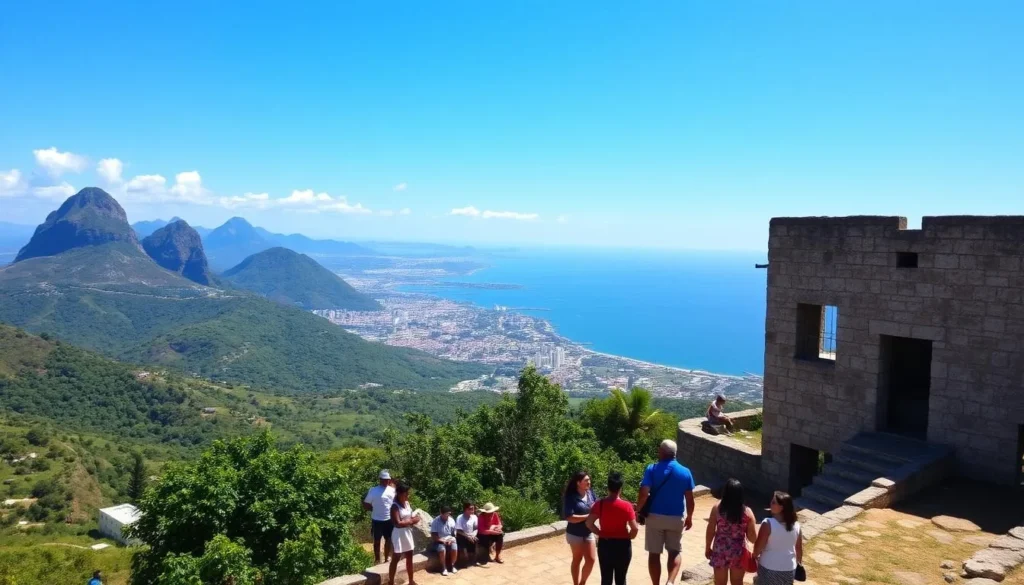
While Port-au-Prince is primarily known for its cultural attractions, the city and its surroundings offer several opportunities to enjoy nature and outdoor activities.
Scenic Viewpoints
L’Observatoire de Boutillier
Perched high in the mountains above Port-au-Prince, this restaurant and observation point offers breathtaking panoramic views of the entire city and bay. It’s especially beautiful at sunset when the city lights begin to twinkle below.
Distance from downtown: About 30 minutes by car
Fort Jacques
Built shortly after Haiti’s independence in 1804, this historic fort offers both cultural significance and stunning views. The stone fortification is well-preserved, and the surrounding pine forest provides a cool retreat from the city heat.
Distance from downtown: About 45 minutes by car
Day Trips from Port-au-Prince
Étang Saumâtre
Haiti’s largest lake is located about an hour from Port-au-Prince. This saltwater lake is home to American crocodiles and numerous bird species, making it interesting for wildlife enthusiasts.
Furcy
This mountain village offers hiking opportunities through pine forests and coffee plantations. The cooler climate and rural atmosphere provide a pleasant contrast to the urban environment of Port-au-Prince.
Barbancourt Rum Distillery
Take a tour of Haiti’s famous rum distillery to learn about the production process and sample some of the finest aged rum in the Caribbean. The grounds feature beautiful tropical gardens.
Explore Port-au-Prince by Sea
Consider a cruise that includes Haiti in its Caribbean itinerary
Safety, Etiquette & Local Customs

Traveling to Port-au-Prince requires some additional preparation and awareness compared to more established tourist destinations. With proper planning and precautions, visitors can have a safe and rewarding experience.
Safety Tips
- Stay in recommended areas like Pétionville, Tabarre, and Pacot.
- Use reputable transportation arranged through your hotel.
- Keep valuables secure and avoid displaying expensive items.
- Register with your embassy upon arrival.
- Have digital and physical copies of important documents.
- Consider hiring a local guide for exploring beyond tourist areas.
- Stay informed about current conditions through your hotel and embassy.
Areas to Avoid
- Cité Soleil and similar neighborhoods with known security concerns.
- Isolated areas, especially after dark.
- Unfamiliar parts of downtown without a guide.
- Political demonstrations or large gatherings.
- Unplanned travel between cities at night.
- Unofficial “guides” who approach you on the street.
- Using ATMs in isolated or poorly lit locations.
Cultural Etiquette
- Greetings – Haitians value politeness and formal greetings. A handshake and “Bonjou” (good morning) or “Bonswa” (good afternoon/evening) is appropriate.
- Photography – Always ask permission before photographing people. Some may request a small payment.
- Dress Code – Dress modestly, especially when visiting religious sites or rural areas. In upscale restaurants and hotels in Pétionville, smart casual attire is appropriate.
- Language – While French is an official language, most Haitians speak Haitian Creole (Kreyòl). Learning a few basic phrases is appreciated.
- Vodou – Show respect for Vodou practices and beliefs, which are an important part of Haitian culture. Ask permission before entering Vodou temples or photographing ceremonies.
- Tipping – 10% is customary in restaurants. For guides and drivers, $5-10 USD per day is appreciated.
Health Precautions: Consult your doctor about recommended vaccinations before traveling. Bring insect repellent, sunscreen, and any necessary medications. Drink only bottled water and be cautious with street food. Travel insurance with medical evacuation coverage is strongly recommended.
Visitor Comments About Port-au-Prince
“The art scene in Port-au-Prince exceeded all my expectations. From the Iron Market to the high-end galleries in Pétionville, I was amazed by the creativity and vibrant colors. The Barbancourt Rum tour was also a highlight—don’t miss it!”
“Hiring a local guide made all the difference for our trip. We felt safe and got to experience authentic Haitian culture that we would have missed otherwise. The view from L’Observatoire de Boutillier is absolutely breathtaking, especially at sunset.”
“The food alone is worth the trip! Griot with pikliz and fried plantains quickly became my favorite meal. The people of Port-au-Prince are incredibly resilient and welcoming. I was particularly moved by the National Pantheon Museum’s exhibits on Haiti’s revolutionary history.”
Practical Travel Tips
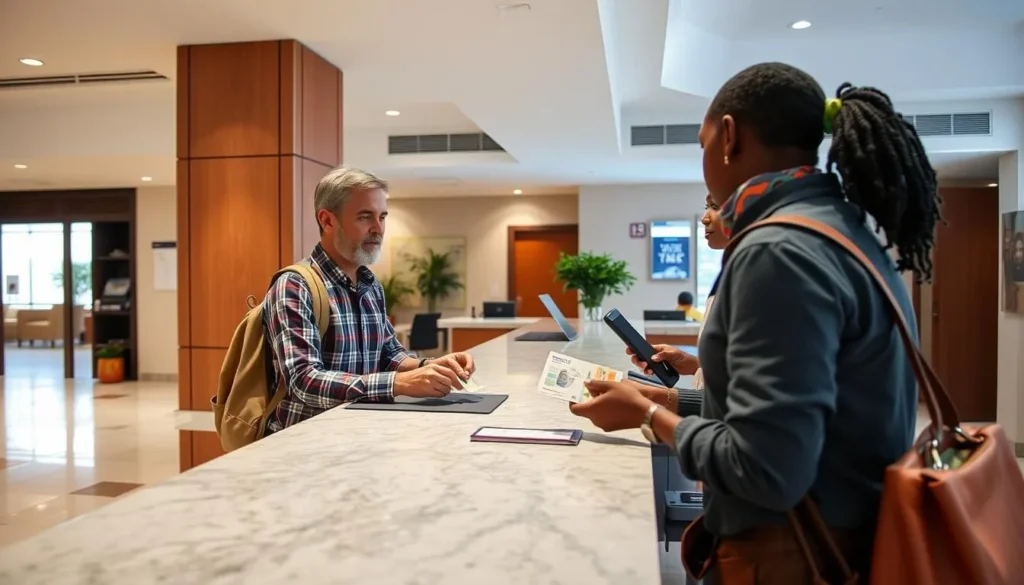
Money Matters
- Currency: Haitian Gourde (HTG), though US dollars are widely accepted in tourist areas.
- Cash: Bring sufficient US dollars as ATMs can be unreliable and credit card acceptance is limited.
- Exchange: Hotels often offer currency exchange services at reasonable rates.
- Bargaining: Expected at markets and with street vendors, but not in established stores or restaurants.
Communication
- Wi-Fi: Available in most hotels and upscale restaurants, but can be inconsistent.
- SIM Cards: Local SIM cards from Digicel or Natcom are available at the airport.
- Useful Apps: Download offline maps, translation apps, and currency converters before arrival.
- Emergency Numbers: Police: 114, Ambulance: 116
Packing Essentials
- Clothing: Lightweight, breathable fabrics with some modest options.
- Medications: Bring all necessary prescriptions plus basic first aid supplies.
- Power Adapters: Haiti uses Type A and B plugs (same as US/Canada).
- Other: Flashlight, hand sanitizer, insect repellent, sunscreen.
Is Port-au-Prince safe for tourists?
Port-au-Prince requires additional safety precautions compared to other Caribbean destinations. Staying in recommended areas like Pétionville, using reputable transportation, and being aware of your surroundings will help ensure a safe visit. Many travelers hire local guides or arrange tours through their hotels for added security and cultural context.
What’s the best way to get around Port-au-Prince?
For first-time visitors, arranging transportation through your hotel or hiring a driver/guide for the day is recommended. Taxis are available but should be arranged through your hotel when possible. Tap-taps (colorful local buses) are an authentic experience but can be challenging to navigate without local knowledge.
What souvenirs should I buy in Port-au-Prince?
Haiti is renowned for its art and crafts. Consider purchasing paintings in the distinctive Haitian style, metal sculptures made from recycled materials, handcrafted jewelry, wooden carvings, or voodoo flags (sequined fabric art). Rum Barbancourt is also a popular souvenir that showcases Haiti’s craftsmanship.
Discover the Soul of the Caribbean
Port-au-Prince offers travelers a rare opportunity to experience a Caribbean destination that remains authentic and largely untouched by mass tourism. From its vibrant art scene and rich revolutionary history to its distinctive cuisine and warm people, Haiti’s capital rewards those who approach it with an open mind and adventurous spirit.
While challenges exist, the cultural treasures and genuine connections you’ll make in Port-au-Prince create memories that last a lifetime. By visiting with respect and curiosity, you’ll not only discover a fascinating destination but also contribute positively to a nation with immense cultural wealth and resilience.
As Haitian proverb says, “Beyond mountains, more mountains” – and beyond each challenge in Haiti, you’ll find even more beauty, inspiration, and warmth waiting to be discovered.
The above is subject to change.
Check back often to TRAVEL.COM for the latest travel tips and deals.

